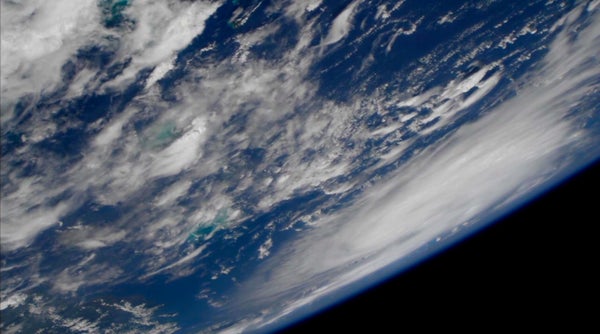You probably know the GIF as the perfect vehicle for sharing memes and reactions. We believe the format can go further, that it has real power to capture science and explain research in short, digestible loops.
So each Friday, we’ll round up the week’s most GIF-able science. Enjoy and loop on.
A VIEW OF AN INTENSIFYING HURRICANE DORIAN
On supporting science journalism
If you're enjoying this article, consider supporting our award-winning journalism by subscribing. By purchasing a subscription you are helping to ensure the future of impactful stories about the discoveries and ideas shaping our world today.
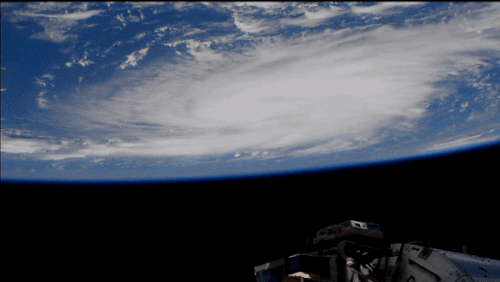
Credit: NASA
On Thursday, the National Weather Service posted an alert: “DORIAN FORECAST TO INTENSIFY DURING THE NEXT COUPLE OF DAYS.” As of Thursday afternoon, the storm is a Category 1 hurricane with sustained winds of 85 miles per hour. On its present, predicted track, it could make landfall in Florida over the Labor Day weekend.The International Space Station captured the storm from more than 200 miles above Earth. The view you see is from Dorian’s west.
A GENTLE JELLYFISH HUG
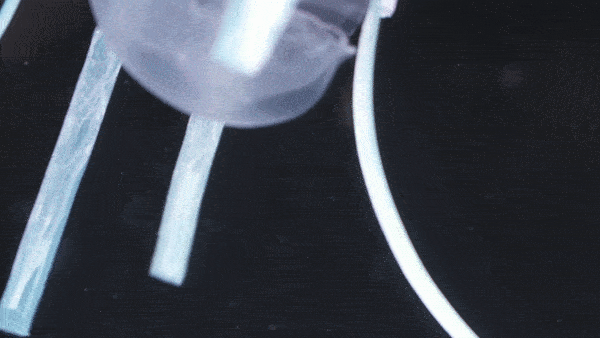
Credit: From “Ultragentle Manipulation of Delicate Structures Using a Soft Robotic Gripper,” by Nina R. Sinatra et al., in Science Robotics, Vol. 4., No. 33, Article No. eaax5425; August 28, 2019
Fun fact: the biomass of gelatinous creatures in the oceans is believed to total 42 million tons—the combined weight of more than 400 aircraft carriers. Despite their abundance, however, it is hard to capture and study many of these critters (such as fragile jellyfish) without damaging them in the process.
Researchers at Harvard University and the City University of New York have come up with a gentle solution. They built a robot with six curling fingers and a 3-D-printed soft palm to delicately embrace these denizens of the deep. Although they have yet to take it out into the ocean, preliminary trials showed that the “hand” can grasp and release several jellyfish species without doing any damage. Put ’er there, Mr. Moon Jelly.
YOU HAVE TO COCKROACH CRAWL BEFORE YOU WALK
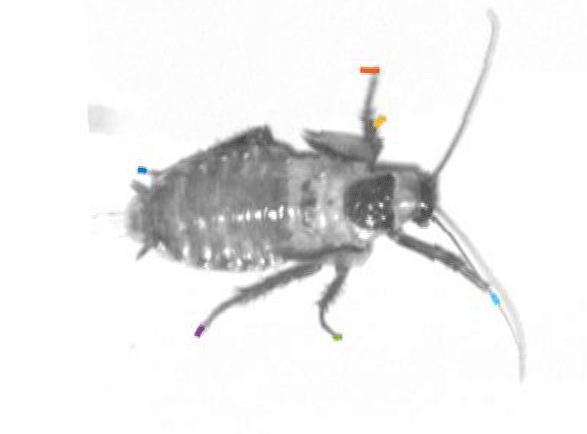
Why look at a cockroach with motion tracking? Because in that flurry of legs, researchers from the Georgia Institute of Technology have found a way to train a robot to move more smoothly.
In order to move efficiently, animals must balance directions from their brains with feedback they get from their limbs. In some insects, it turns out, the limbs are more in control than the brain.
Take a walking stick bug: each of its legs seems to have a mind of its own. But a cockroach’s amble relies on more central control. This can be seen in the GIF above, which highlights the centrally coordinated, alternating movement of three of the roach’s legs. It simultaneously moves two legs on the left and one on the right, and vice versa. When researchers gave a commercially available robot this kind of leg coupling, it was able to jump around with a bit more roach-like grace.
CATCHING THE CLASP OF A CORAL
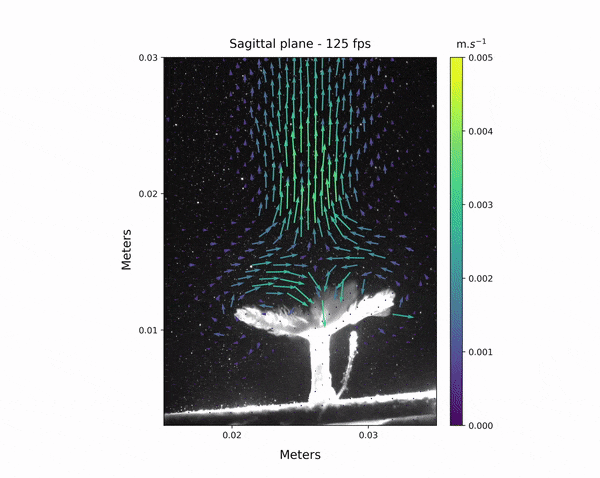
Credit: From “A Novel Mechanism of Mixing by Pulsing Corals,” by Julia E. Samson et al., in Journal of Experimental Biology, Vol. 222, No. 15; August 2019
It looks like a delicate, feathered parasol gently opening in the wind. Or maybe it is a dianthus blossom unfurling in the morning sun. What you are actually looking at is a soft coral polyp, and new research shows that its rhythmic waving helps it eat—but not by pulling in food.
The jittering arrows in the GIF above show the water flow that the pulse creates. As the polyp’s fronds contract, a jet of water shoots outward. This jet forces out oxygen that accumulates in the middle of the polyp (thanks to its resident symbionts, photosynthetic algae called zooxanthellae). Cleared wastes means more food for the symbionts, and that means more food created for the coral—five times more, to be exact. It would seem that when a polyp waves, everyone wins.
THE SPACE BETWEEN
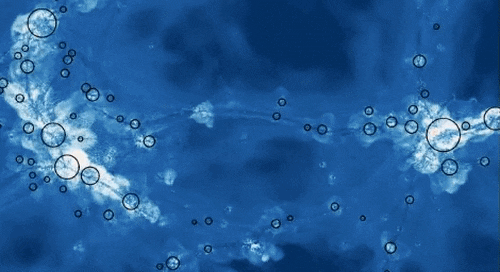
Credit: Yale University
Galaxies get all the attention. Filled to the brim with hundreds of billions of stars, these island universes often seem like the most prominent occupants of space’s vast emptiness. But the gulfs between galaxies are far from empty. In fact, these voids are where the majority of cosmic matter resides.
This GIF shows the results of an unprecedentedly detailed simulation of the intergalactic medium (IGM), the gas-suffused, dust-sprinkled space between galaxies. As you can see, there is a lot going on—chiefly, collisions of huge, diffuse clouds of gas. The colors indicate changing temperatures, which range from 10,000 kelvins (17,540 degrees Fahrenheit) in the dark blue to over a million kelvins (1,799,540 F) in dark red. These temperatures are deceiving; they reflect the very high speeds at which the gas particles are moving. The space between galaxies is actually very, very cold. The circles point out large clumps of matter, many of which join and grow over time.
The outcome of this simulation surprised the researchers. For one thing, they had expected the flat sheets of matter in the IGM known as “pancakes” to be smooth—but they learned that with temperature changes the pancakes would “shatter” into many small, dense clouds. This effect can be seen in the pockmarked white clouds that appear and spread near the middle of the GIF. You didn’t think “empty” space could be so interesting, did you?
PARASITES: NOW IN 3-D
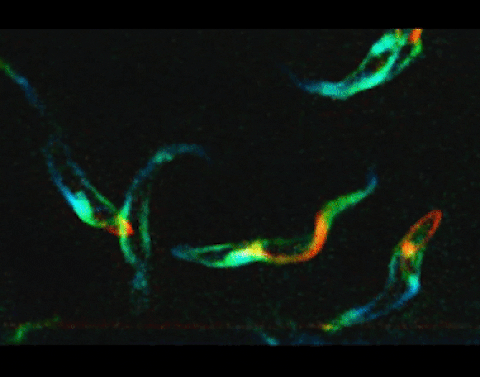
Credit: Richard Wheeler
These are Trypanosoma brucei, a parasite that causes a disease called sleeping sickness. These organisms use a long, tail-like structure called a flagellum to move about. Historically scientists could only view these critters in two dimensions with a classic light microscope. But new tools are making it easier for researchers to study them in three dimensions as they move, resulting in images such as the rainbow-colored ones seen above.
This GIF is made up of three stacked images, each focused to a different depth. Every layer has its own color: the shallowest layer is red, the middle is green and the deepest is blue. Combining the images gives a semblance of a third dimension, allowing the researchers to better see how the bacteria use their flagella. What looked like a back-and-forth wiggle in 2D now appears more like a corkscrew motion. The researchers also filmed the parasites at a very high frame rate so they could significantly slow down the movements; in reality the organisms beat their flagella about five times a second.
THE SMALLEST MACHINES
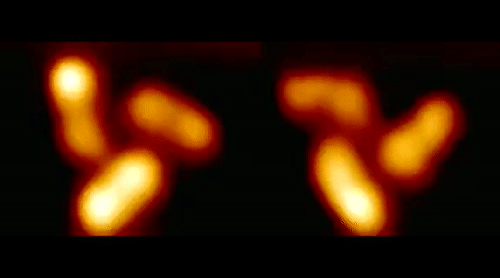
Credit: From “A Chiral Molecular Propeller Designed for Unidirectional Rotations on a Surface,” by Yuan Zhang et al., in Nature Communications, Vol. 10, Article No. 3742; August 20, 2019
It may appear blurry, but this GIF has the highest resolution of any on the page. Its frame is just nanometers across and displays two miniscule propellers, each a single molecule.
Although these propellers are nearly a billion times smaller than those found on a motorboat, they function rather similarly. Three molecular groups form the spinning fins and attach to a central ruthenium atom, which acts much like a ball bearing. The ruthenium atom is solidly attached to a base of molecular groups shaped like a five-petaled flower. The tilt of the petals determines the direction of the propeller’s spin.
Although this is not the first nano-machine of its kind, it is the first to spin in just one direction, thanks to the tilt of its flower-shaped base. This is a step toward molecular propellers that can act more like gears, interacting with nearby molecules to create a chain of movement. Such a machine could move molecular loads for faster transfer of energy or information.
Want more science GIFs? Here you go.
